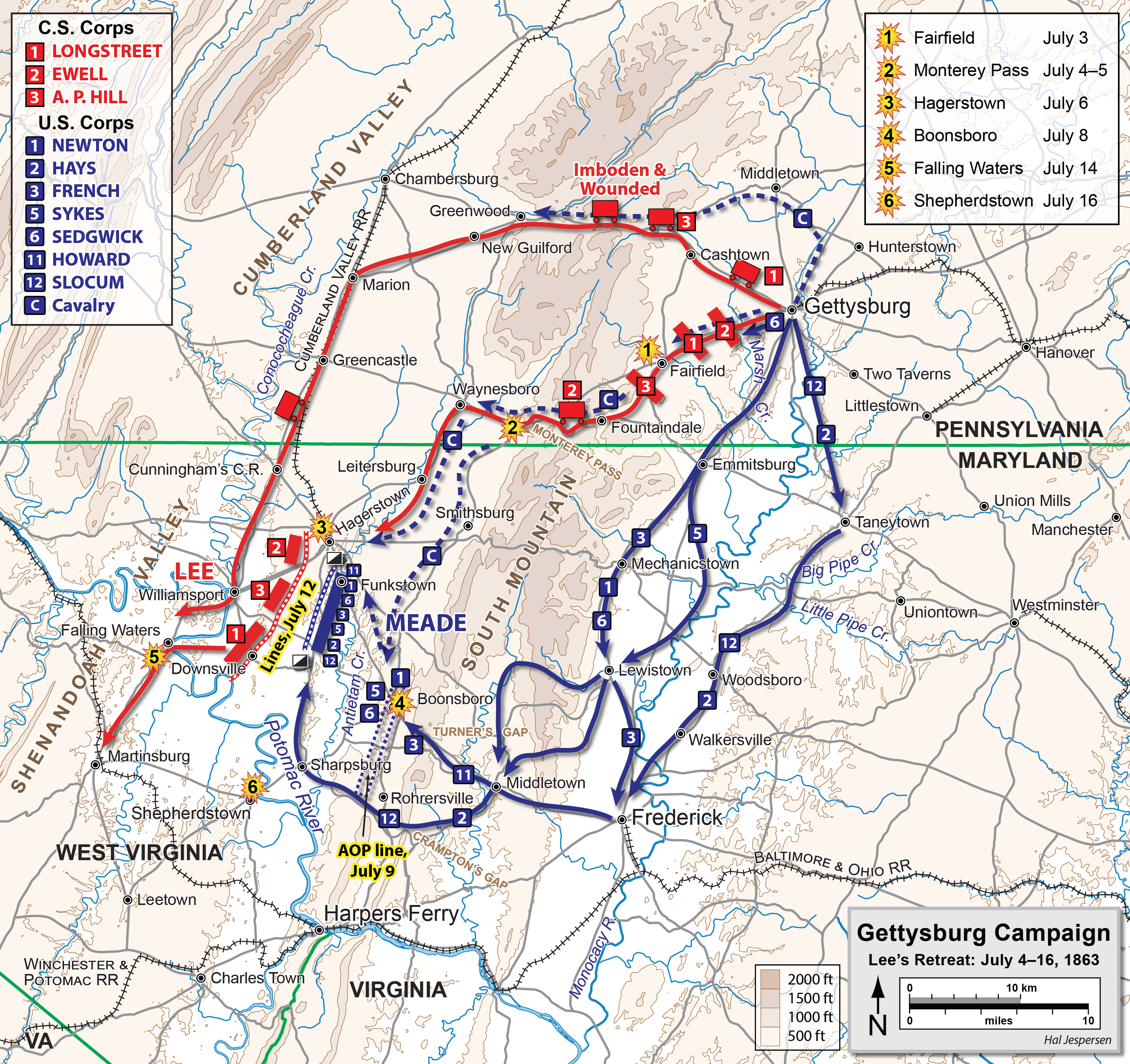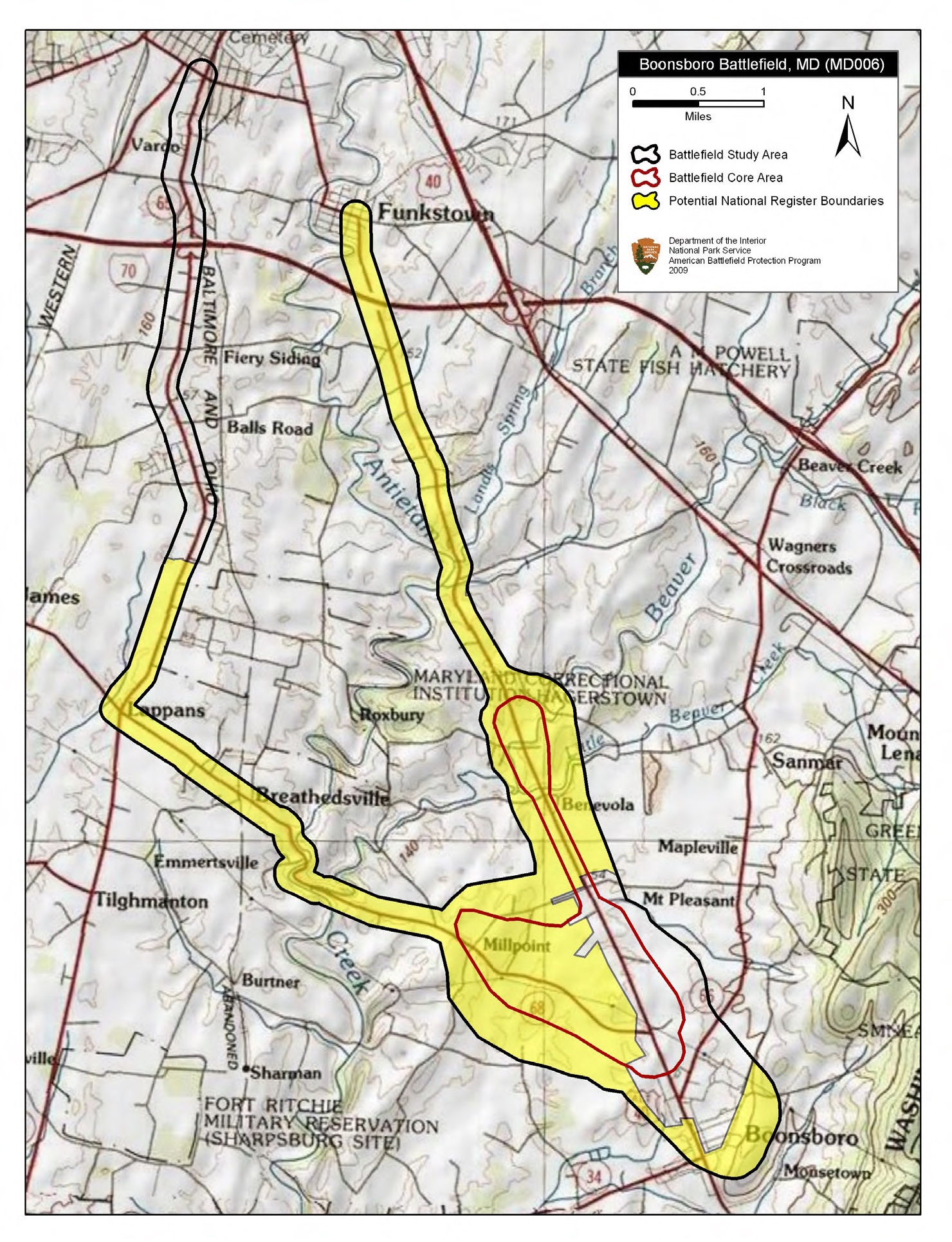Battle of Boonsboro on:
[Wikipedia]
[Google]
[Amazon]

 The Battle of Boonsboro took place on July 8, 1863, in
The Battle of Boonsboro took place on July 8, 1863, in
Maryland Civil War Trails wayside marker for the Battle of Boonsboro
/ref>

 The Battle of Boonsboro took place on July 8, 1863, in
The Battle of Boonsboro took place on July 8, 1863, in Washington County, Maryland
Washington County is located in the western part of the U.S. state of Maryland. As of the 2020 census, the population was 154,705. Its county seat is Hagerstown. Washington County was the first county in the United States to be named for th ...
, as part of the Retreat from Gettysburg
The Confederate Army of Northern Virginia began its Retreat from Gettysburg on July 4, 1863. Following General Robert E. Lee's failure to defeat the Union Army at the Battle of Gettysburg (July 1–3, 1863), he ordered a retreat through Ma ...
during the Gettysburg Campaign of the American Civil War
The American Civil War (April 12, 1861 – May 26, 1865; also known by other names) was a civil war in the United States. It was fought between the Union ("the North") and the Confederacy ("the South"), the latter formed by states ...
.
While Gen. Robert E. Lee's Army of Northern Virginia
The Army of Northern Virginia was the primary military force of the Confederate States of America in the Eastern Theater of the American Civil War. It was also the primary command structure of the Department of Northern Virginia. It was most oft ...
retreated toward Virginia
Virginia, officially the Commonwealth of Virginia, is a state in the Mid-Atlantic and Southeastern regions of the United States, between the Atlantic Coast and the Appalachian Mountains. The geography and climate of the Commonwealth ar ...
following its defeat in the Battle of Gettysburg
The Battle of Gettysburg () was fought July 1–3, 1863, in and around the town of Gettysburg, Pennsylvania, by Union and Confederate forces during the American Civil War. In the battle, Union Major General George Meade's Army of the Po ...
, Confederate
Confederacy or confederate may refer to:
States or communities
* Confederate state or confederation, a union of sovereign groups or communities
* Confederate States of America, a confederation of secessionist American states that existed between 1 ...
cavalry held the South Mountain passes. The cavalry fought a rearguard action against elements of the Union
Union commonly refers to:
* Trade union, an organization of workers
* Union (set theory), in mathematics, a fundamental operation on sets
Union may also refer to:
Arts and entertainment
Music
* Union (band), an American rock group
** ''Un ...
1st and 3rd Cavalry Divisions and supporting infantry
Infantry is a military specialization which engages in ground combat on foot. Infantry generally consists of light infantry, mountain infantry, motorized infantry & mechanized infantry, airborne infantry, air assault infantry, and mar ...
. This action was one of a series of successive cavalry engagements around Boonsboro, Hagerstown, and Williamsport.
Battle
ConfederateMaj. Gen.
Major general (abbreviated MG, maj. gen. and similar) is a military rank used in many countries. It is derived from the older rank of sergeant major general. The disappearance of the "sergeant" in the title explains the apparent confusion of a ...
J.E.B. Stuart
James Ewell Brown "Jeb" Stuart (February 6, 1833May 12, 1864) was a United States Army officer from Virginia who became a Confederate States Army general during the American Civil War. He was known to his friends as "Jeb,” from the initials of ...
faced a difficult assignment—locate the Union cavalry and prevent it from severing Gen. Lee's avenue of retreat to Williamsport and the Potomac River
The Potomac River () drains the Mid-Atlantic United States, flowing from the Potomac Highlands into Chesapeake Bay. It is long,U.S. Geological Survey. National Hydrography Dataset high-resolution flowline dataThe National Map. Retrieved Augu ...
. The result was the biggest and most sustained cavalry battle in Maryland during the campaign. The Battle of Boonsboro occurred along the National Road
The National Road (also known as the Cumberland Road) was the first major improved highway in the United States built by the federal government. Built between 1811 and 1837, the road connected the Potomac and Ohio Rivers and was a main tran ...
on Wednesday, July 8, 1863.
Stuart, with five cavalry brigade
A brigade is a major tactical military formation that typically comprises three to six battalions plus supporting elements. It is roughly equivalent to an enlarged or reinforced regiment. Two or more brigades may constitute a division.
B ...
s, advanced from the direction of Funkstown and Williamsport. He first encountered Federal resistance at Beaver Creek Bridge, north of Boonsboro. By 11 a.m., the Confederate cavalry had pushed forward to several mud-soaked fields, where fighting on horseback was nearly impossible, forcing Stuart's troopers and Brig. Gens. H. Judson Kilpatrick
Hugh Judson Kilpatrick (January 14, 1836 – December 4, 1881) was an officer in the Union Army during the American Civil War, achieving the rank of brevet major general. He was later the United States Minister to Chile and an unsuccessful cand ...
's and John Buford
John Buford, Jr. (March 4, 1826 – December 16, 1863) was a United States Army cavalry officer. He fought for the Union as a brigadier general during the American Civil War. Buford is best known for having played a major role in the first day ...
's Union cavalry divisions to dismount and slug it out like infantry.
By mid-afternoon, the Union left under Kilpatrick crumbled as the Federals ran low on ammunition under increasing Confederate pressure. Stuart's advanced ended about 7 p.m., however, when Union infantry arrived—the first to engage in battle since Gettysburg. Stuart withdrew north to Funkstown, but he had gained another day for Lee's retreating army. Two days later, he would again delay the Federal pursuit at the Battle of Funkstown./ref>
References
Notes
{{authority control 1863 in the United States Boonsboro Boonsboro Boonsboro Boonsboro History of Washington County, Maryland 1863 in Maryland Boonsboro July 1863 events